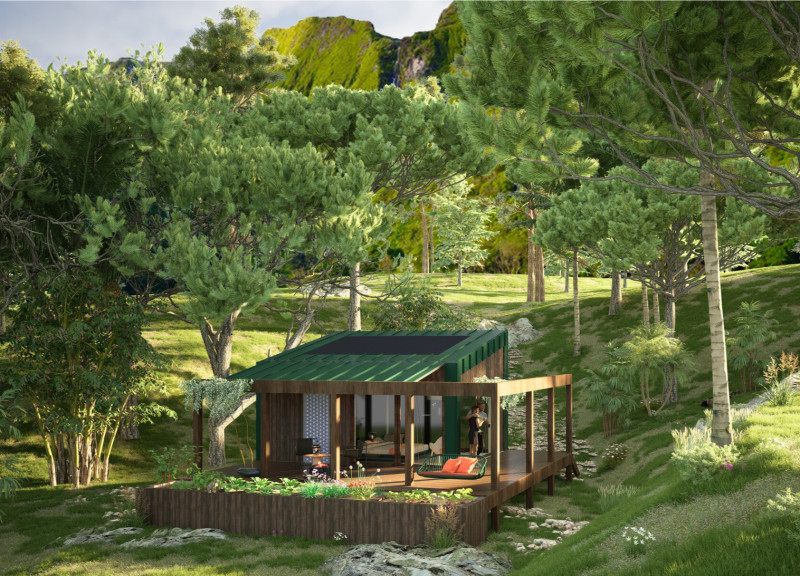5 key facts about this project
At its core, the project is designed to facilitate [insert main function, e.g., residential living, community engagement, commercial activity], thus positioning itself as a vital component of the local environment. The careful arrangement of spaces encourages interaction, while private areas remain discreetly partitioned, providing a sanctuary for individual reflection. This duality of openness and intimacy is a hallmark of the architectural design, promoting both community connections and personal privacy.
Significant attention has been given to the material selection, which plays a crucial role in both the structural integrity and the visual language of the project. The use of concrete offers durability and strength, while wooden elements introduce warmth and a sense of nature within the built environment. This thoughtful combination not only enhances the sensory experience of the space but also reflects an ethos of sustainability. Glass is employed extensively to create transparency, allowing natural light to permeate the interiors and providing visual continuity with the exterior landscape. The incorporation of steel contributes to the structural framework while enabling a minimalist aesthetic that speaks to modern design principles.
Each area of the project is meticulously designed, with flow and accessibility at the forefront. Entry points are strategically placed to ensure a welcoming approach, encouraging visitors to engage with the space. Public areas, such as [insert examples, e.g., gathering spaces, lounge areas], are designed to accommodate communal activities, fostering a sense of belonging and encouraging social interaction. Conversely, private zones, designed for [insert function, e.g., living, working, or creative activities], are positioned to provide a retreat from the bustling activities of public life.
Unique design approaches are evident throughout the project. The integration of sustainable technologies, such as solar panels and rainwater harvesting systems, highlights a commitment to environmental responsibility. This project does not merely coexist with its environment; rather, it enhances it by promoting ecosystem balance and resource efficiency. Furthermore, the aesthetic forms utilized within the design are derived from a conceptual framework that respects and reflects the natural surroundings, creating a harmonious relationship between the built and natural worlds.
Ultimately, the architectural design of this project stands as a testament to contemporary architectural practices that emphasize the importance of community, sustainability, and engagement with the environment. Each element, from the layout to the material choices, has been meticulously considered to ensure a cohesive, functional, and aesthetically pleasing outcome. For those interested in the intricate details and creative thought behind this project, a deeper exploration of the architectural plans, architectural sections, architectural designs, and architectural ideas is encouraged. The complexity and thoughtfulness of this architectural endeavor become even more apparent through a closer examination of its components and spatial narrative.


 Audrey Eliane Bernadette Provost,
Audrey Eliane Bernadette Provost, 























